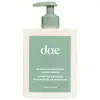What's inside
What's inside
 Key Ingredients
Key Ingredients

 Benefits
Benefits

 Concerns
Concerns

 Ingredients Side-by-side
Ingredients Side-by-side

Water
Skin ConditioningPentylene Glycol
Skin ConditioningPolysorbate 80
EmulsifyingPropanediol
SolventParfum
MaskingIsobutylene/Ethylmaleimide/Hydroxyethylmaleimide Copolymer
Phenoxyethanol
PreservativeAlcohol Denat.
AntimicrobialHydroxyacetophenone
AntioxidantPanthenol
Skin ConditioningSodium Polystyrene Sulfonate
Emulsion StabilisingEthylhexylglycerin
Skin ConditioningTetrasodium Glutamate Diacetate
Hydrolyzed Rice Protein
Skin ConditioningVp/Methacrylamide/Vinyl Imidazole Copolymer
Glycerin
HumectantOpuntia Ficus-Indica Seed Oil
EmollientMelia Azadirachta Flower Extract
Skin ConditioningMelia Azadirachta Leaf Extract
Skin ConditioningButylene Glycol
HumectantCorallina Officinalis Extract
Skin ConditioningBetaine
HumectantCereus Grandiflorus Extract
AntioxidantCitrus Aurantifolia Fruit Extract
Skin ConditioningPhalaenopsis Amabilis Flower Extract
BleachingHibiscus Rosa-Sinensis Flower Extract
HumectantCoccinia Indica Fruit Extract
Skin ConditioningMoringa Oleifera Leaf Extract
Skin ConditioningWater, Pentylene Glycol, Polysorbate 80, Propanediol, Parfum, Isobutylene/Ethylmaleimide/Hydroxyethylmaleimide Copolymer, Phenoxyethanol, Alcohol Denat., Hydroxyacetophenone, Panthenol, Sodium Polystyrene Sulfonate, Ethylhexylglycerin, Tetrasodium Glutamate Diacetate, Hydrolyzed Rice Protein, Vp/Methacrylamide/Vinyl Imidazole Copolymer, Glycerin, Opuntia Ficus-Indica Seed Oil, Melia Azadirachta Flower Extract, Melia Azadirachta Leaf Extract, Butylene Glycol, Corallina Officinalis Extract, Betaine, Cereus Grandiflorus Extract, Citrus Aurantifolia Fruit Extract, Phalaenopsis Amabilis Flower Extract, Hibiscus Rosa-Sinensis Flower Extract, Coccinia Indica Fruit Extract, Moringa Oleifera Leaf Extract
Ingredients Explained
These ingredients are found in both products.
Ingredients higher up in an ingredient list are typically present in a larger amount.
Parfum is a catch-all term for an ingredient or more that is used to give a scent to products.
Also called "fragrance", this ingredient can be a blend of hundreds of chemicals or plant oils. This means every product with "fragrance" or "parfum" in the ingredients list is a different mixture.
For instance, Habanolide is a proprietary trade name for a specific aroma chemical. When used as a fragrance ingredient in cosmetics, most aroma chemicals fall under the broad labeling category of “FRAGRANCE” or “PARFUM” according to EU and US regulations.
The term 'parfum' or 'fragrance' is not regulated in many countries. In many cases, it is up to the brand to define this term.
For instance, many brands choose to label themselves as "fragrance-free" because they are not using synthetic fragrances. However, their products may still contain ingredients such as essential oils that are considered a fragrance by INCI standards.
One example is Calendula flower extract. Calendula is an essential oil that still imparts a scent or 'fragrance'.
Depending on the blend, the ingredients in the mixture can cause allergies and sensitivities on the skin. Some ingredients that are known EU allergens include linalool and citronellol.
Parfum can also be used to mask or cover an unpleasant scent.
The bottom line is: not all fragrances/parfum/ingredients are created equally. If you are worried about fragrances, we recommend taking a closer look at an ingredient. And of course, we always recommend speaking with a professional.
Learn more about ParfumWater. It's the most common cosmetic ingredient of all. You'll usually see it at the top of ingredient lists, meaning that it makes up the largest part of the product.
So why is it so popular? Water most often acts as a solvent - this means that it helps dissolve other ingredients into the formulation.
You'll also recognize water as that liquid we all need to stay alive. If you see this, drink a glass of water. Stay hydrated!
Learn more about Water